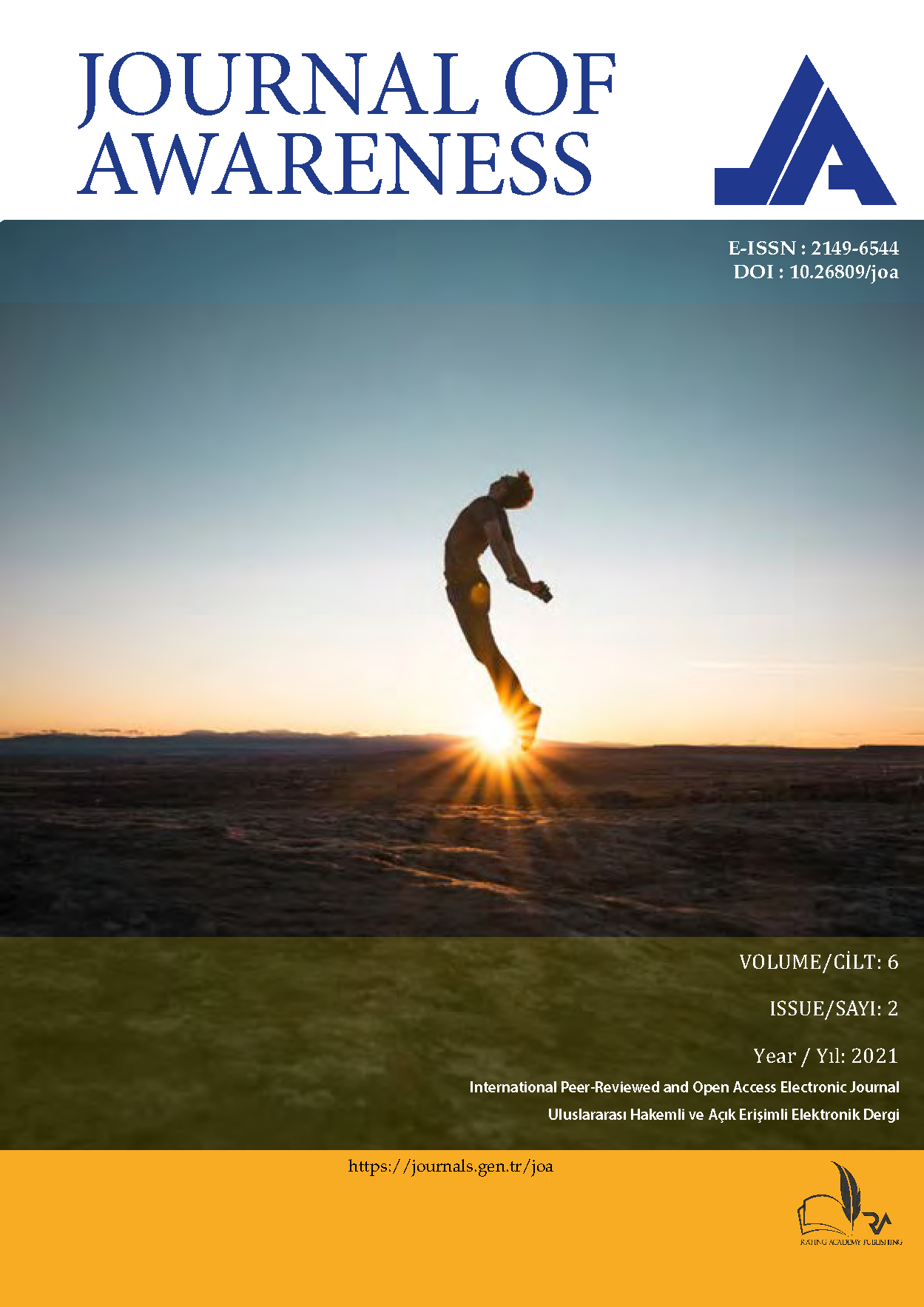SPEAKING IN MEDIAS RES: MODERNISM VERSUS MODERNITY IN SHERWOOD ANDERSON’S WINESBURG, OHIO
DOI:
https://doi.org/10.26809/joa.6.2.02Anahtar Kelimeler:
Literary Modernism- modernity- modern American short story- ancient storytelling- epiphanyÖzet
Since the times of Homeric epics, speaking in medias res has been the most suitable form of storytelling, leaving the threshold of narrative ajar in the present, upholding a historical sense. This ancient historical sense of time, inherent in oral traditions revived in early twentieth century literary Modernism as T. S. Eliot stated in his 1919 essay, “Tradition and The Individual Talent:” “… And it is at the same time what makes a writer most acutely conscious of his place in time, of his own contemporaneity.” Be it a messianic revival or primitivism, calling for a coherent context for all, the Modernists were in urge for new narrative techniques overcoming the devastating traumas of the World Wars, representing the shared experiences worldwide. In this respect, early twentieth-century. Modernism provided a literary niche for a new generation of storytellers engaged in the momentous grasp of time coalescing with an epiphany. Thus, regarding the present global crises of humanity against which we need to retreat to our local worlds, a review on literary Modernism would suggest a solution as it had once achieved as an internationalist current by gathering the minds and
shared experiences in recovering from the overwhelming forces of modernity. This article aims to review literary Modernism and its correspondence with ancient forms of storytelling and sense of time in Sherwood Anderson’s Winesburg, Ohio stories regarding the shared thematic motifs transcending the cultural and national boundaries in representing the overwhelming traumas of early twentieth century modernity.
İndirmeler
Referanslar
ABRAMS, M.H., (1993). A Glossary of Literary Terms. Orlando: Harcourt Brace Jovanovich, Publishers
ANDERSON, S., (1992). Winesburg, Ohio. Penguin Classics.
AUERBACH, E., (1953). Mimesis. Princeton: Princeton University Press.
BALIONG, E. S., (2016). “Fear in a Handful of Dust: Analogies of Destruction and Redemption Between Isaiah and T. S. Eliot’s The Waste Land.” Literary Study,
Carayan Journal. 2(1) [online], http://carayan.xu.edu.ph/fear-in-a-handful-of-dust- analogies-of-destruction-andredemption-between-isaiah-and-t-s-eliots-the-wasteland/[Accessed on February 12, 2021].
BOZKIR, A. H., (2021). Analytical Psychology of Carl Gustav Jung in Terms Of Psychology of Religion; And God as an Archetype of Collective Unconscious. MA. Dokuz Eylül University Graduate School of Social Sciences Department
of Philosophy and Religion Sciences. (Unpublished Dissertation).
CALVINO, I., (2000). Why Read The Classics? Vintage.
CAMPBELL, J., (2004). The Hero With A Thousand Faces. Princeton: Princeton University Press.
CHILDS, P., (2000). Modernism. London: Routledge.
COWLEY, M., (1992). Introduction. Winesburg, Ohio. Sherwood Anderson. Penguin Classics.
ELIOT, T.S, (1934). T.S. Eliot Selected Poems. New York: Harcourt, Brace & World, Inc.
ELIOT, T.S., (2009). “Tradition and The Individual Talent.” [online], Poetry Foundation. https://www.poetryfoundation.org/articles/69400/tradition-and-theindividual-talent[Accessed on March 22, 2021].
FRYE, N., (1982). The Great Code: The Bible And Literature. San Diego: Harcourt Brace &Company.
GOKCEN, N., (2002).“Women, Sacrality, And Artistic Creativity: Three Winesburg Stories. The Sherwood Anderson Review. XXVII (2): 7-19 The Official Publication of The Sherwood Anderson Society.
GOKÇEN, N. and AGIL, N., (2005). “Over Her Dead Body: Sherwood Anderson’s The Man Who Became a Woman and Death in the Woods.” Journal of American Studies of Turkey. (21): 17-25.
HARRIS, J. ed., (2001). Preface. Community And Civil Society. Ferdinand Tönnies. Cambridge: Cambridge University
Press.
HEMINGWAY, E., (1996). The Sun Also Rises. New York: Scribner Classics.
HOMER, (2007). The Odyssey. London: Vintage Books. • JUNG, C.G., (1969). The Archetypes and The Collective Unconscious. New York: Princeton University Press.
LANDA, J. A. G., (2004). “Aristotle’s Poetics.” SSRN Electronic Journal. [online]. https://www.researchgate.net/publication/262224737 [Accessed on November 20, 2020].
PAPARELLA, E., (2007). “The Uniqueness of Giambattista Vico’s Poetic Philosophy.” Metanexus, [online]https://metanexus.net/uniqueness-giambattista-vicos-poeticphilosophy / [Accessed on January 11, 2021].
SCOFIELD, M., (2006). The Cambridge Introduction to the American Short Story. Cambridge: Cambridge University Press.
SMITH, J. J., (2011). “Locating the Short-Story Cycle.” Journal of Short Story in English. 57: 59-79 [online]. http://
journals.openedition.org/jsse/1182. [Accessed on August
, 2020].
STEIN, G., (1993). Everybody’s Autobiography. Cambridge: Exact Change.
STOUCK, D., (1990). “Anderson’s Expressionist Art.” New Essays on Winesburg, Ohio. John W. Cowley ed. New York:
Cambridge University Press.
THUNE, E. and PRIGOZY, R. eds., (1973). Short Stories: A Critical Anthology. New York: Macmillan Company.
TÖNNIES, F., (2001). Community And Civil Society. Cambridge: Cambridge University Press.
VICO, G., (1999). New Science. London: Penguin Books. • YEATS, W. B., (1989). “The Second Coming.” The Collected Poems of W. B. Yeats. [online], Poetry Foundation, https://www.poetryfoundation.org/poems/43290/the-secondcoming [Accessed on March 22, 2021].
İndir
Yayınlanmış
Nasıl Atıf Yapılır
Sayı
Bölüm
Lisans
Telif Hakkı (c) 2021 Holistence Publications

Bu çalışma Creative Commons Attribution 4.0 International License ile lisanslanmıştır.
Yazarlar, makale Journal of Awareness’de yayınlanmak üzere kabul edildiğinde.makalenin içeriğindeki tüm telif haklarını, Rating Academy Ar-Ge Yazılım Yayıncılık Eğitim Danışmanlık ve Organizasyon Ticaret Ltd. Şti’ne devrederler. Yazarlar, patent hakları gibi telif hakkı dışındaki tüm mülkiyet haklarını saklı tutar.
Bu makalede yazar olarak listelenen herkes çalışmaya önemli, doğrudan, entelektüel katkılar yapmış olmalı ve bunun için kamu sorumluluğu almalıdır.
Bu makale daha once yayınlanmamış ve başka dergilerde yayınlanmak üzere gönderilmemiştir.










